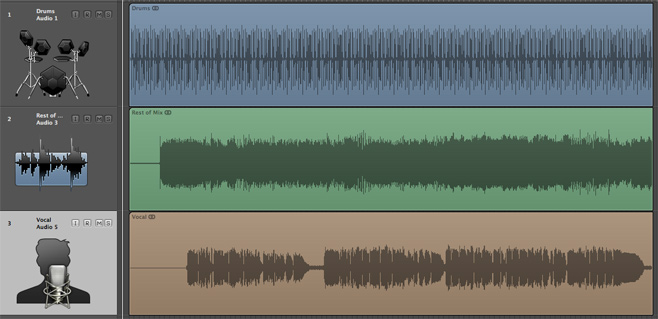




These production tips and tricks are designed to help you make the most of your music. Covering everything from mic technique to post-production, we hope you find them useful!




Industry news, useful links and what’s going on at Tenth Egg
© Tenth Egg Productions 2008




A different approach to music production.

music mastering

Tips and tricks from our engineers to help you with your music making



Stem Mastering (also known as Separation Mastering) differs from tradition stereo mastering by using as its basis several stereo sub-mixes of a track rather than a single stereo mix. The advantage for the mastering engineer is much greater scope for tweaking the mix in question. For example we could really beef up the bass without interfering with the low end of the beat or widen the synths without touching the vocals (as long as all these elements are on different sub-mixes)
At Tenth Egg we recommend stem mastering to clients who are pretty happy with their mix, but feel that a particular element isn't quite right, maybe the vocal isn't sitting right or the bass doesn't sound full enough compared to the rest of the mix. It can also be the best approach in situations where maximum loudness in the final master is a priority, allowing for the mix to be squeezed far more transparently.
Even if you don't intend to get your music stem mastered there are a couple of good reasons to create sub-mixes of your tracks:
The first is back-up. Because music technology moves on so quickly old technology becomes defunct equally fast, meaning that there's no guarantee that the Cubase project you created this year will open and play back identically on next year's version. This is especially true when it comes to plug-ins and soft-synths. However, your stems will open the same years down the line, and should afford you with most of the
Stems are even more important if you're getting someone else to mix your music, giving you the ability to make simple tweaks to the relative levels, tonal balance and overall sound of the key mix components without the expense of going back to your mix engineer. Vocal-up mix, no problem, drums-and-bass-up mix for the club, easy.
Looking to the future, stems will also make the up-mixing of your back-catalogue from stereo to surround a much quicker and cheaper job. And thinking of today, sub-mixes are a great basis for remixers to create alternative versions of your tracks.
Choose your groups
This is probably the most important decision. Five is a good number to work with and a typical breakdown for would be something like: Sub-mix 1: Drums, Sub-mix 2: Vocals, Sub-mix 3: Bass, Sub-mix 4: Lead guitars, Sub-mix 5: Everything else. Just think about what the key groups in your mix are and make these your stems.
Reference-point
Making sure that you start each mix-down from the same point in your track is crucial to allow the sub-mixes to be easily lined up Ideally you would begin each stereo sub-mix from a second or two before the start of the track and leave another second or so silence on the very end.
Tip 17 : Preparing a Mix for Stem Mastering





Other than that, many of the same rules apply as preparing a mix for traditional stereo mastering. . .
Levels
Avoiding clipping is key. If your mix is hitting the red on the output level meter then drop the level of the master fader to provide around 1dB of headroom. Remember to leave the master fader on your mixer at the same level for each sub-mix so that when they are recombined down the line they recreate the balance of your original mix exactly.
Mix Processing
As with preparing a mix for traditional mastering you should ideally leave off any overall mix compression, EQ or limiting, but leave in place all individual channel processing and bus effects.
Format
Bouncing each sub-mix as a Stereo 24Bit .wav file is ideal and it's best to use the same sample rate as you recorded at, typically 44.1kHz.
So now you know how, there's no excuse! Creating mix stems is definitely worth the extra half hour it'll take and can really help you get the best out of the mastering process.

Above: Each stereo sub-mix has the same start point to make lining up easy


